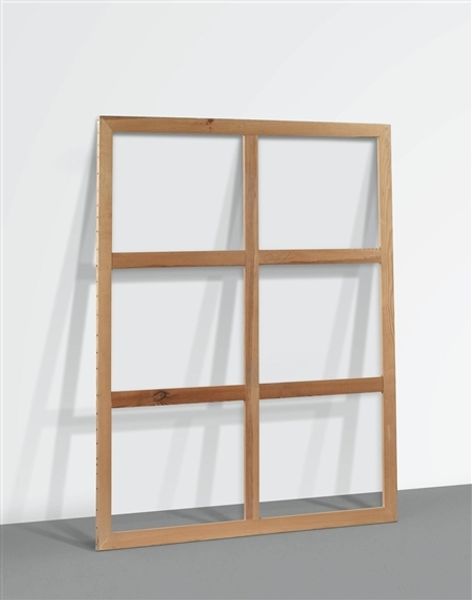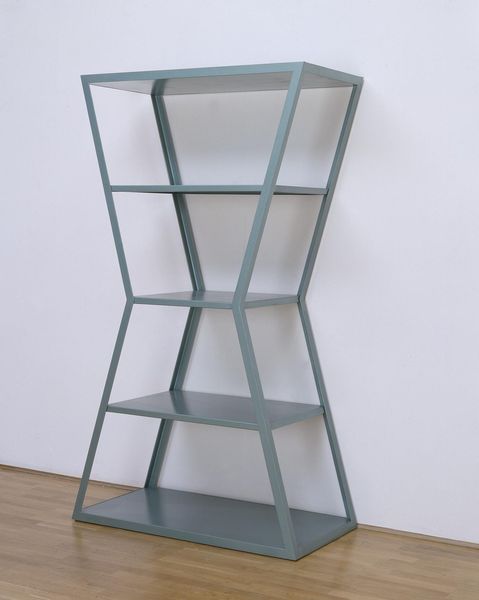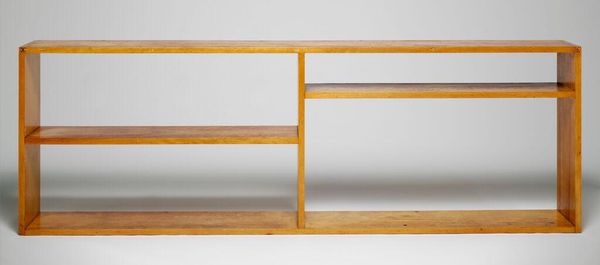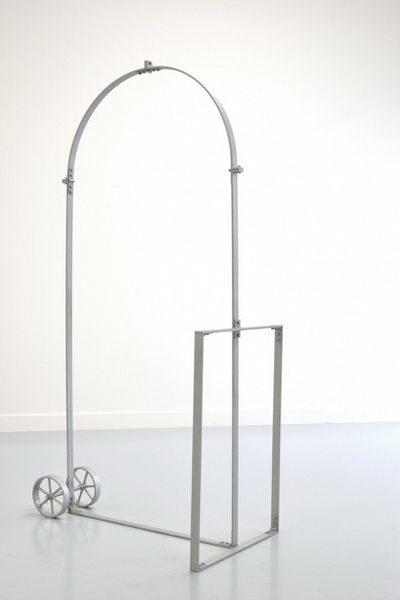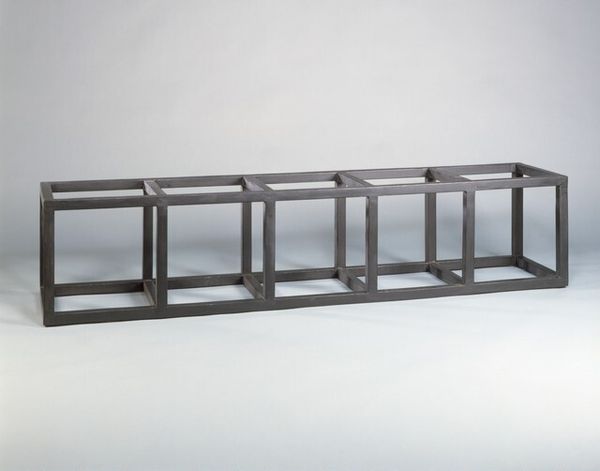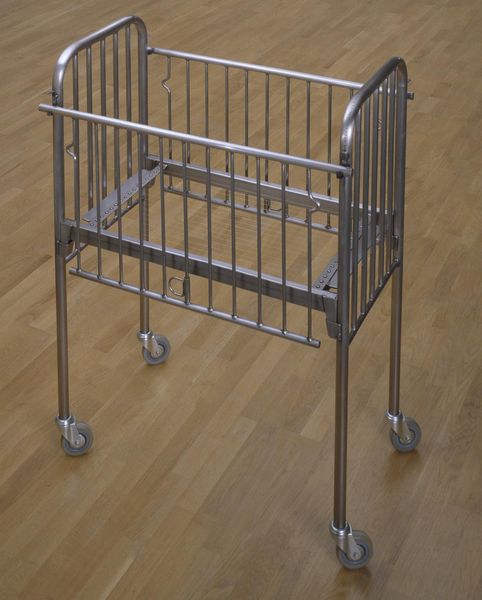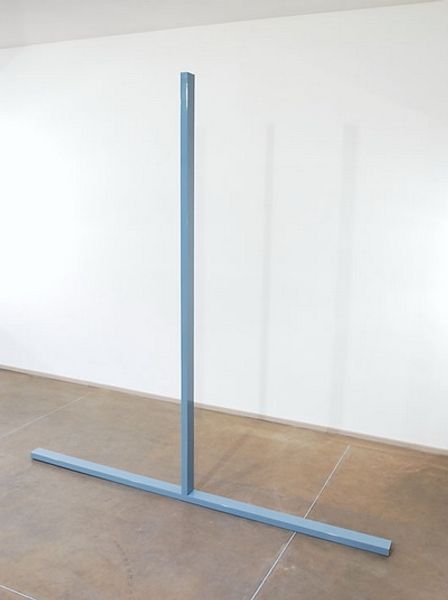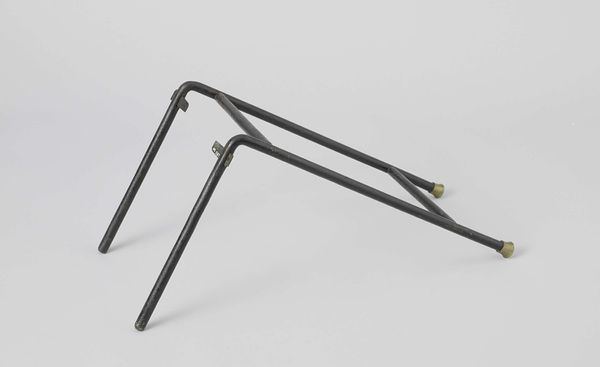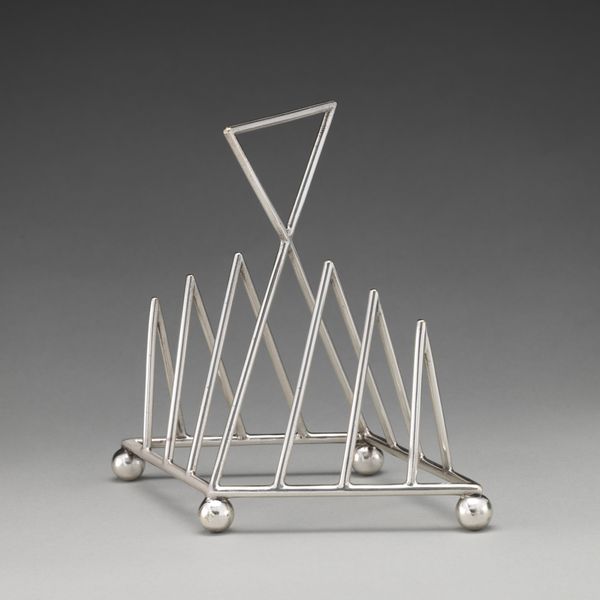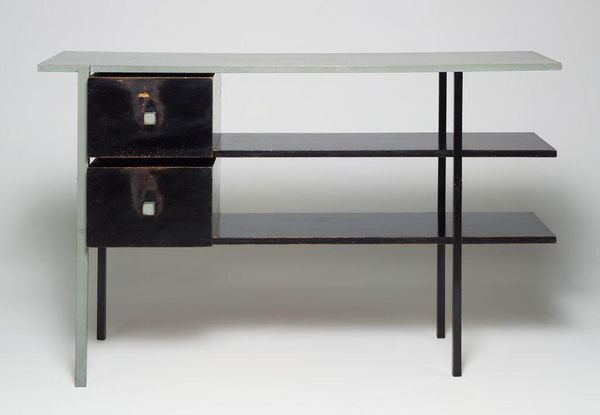
metal, sculpture, installation-art
#
metal
#
constructivism
#
geometric
#
sculpture
#
installation-art
#
modernism
Dimensions: height 212 cm, width 150 cm, depth 68 cm
Copyright: Rijks Museum: Open Domain
Curator: Right, here we have Aldo van Eyck's playground sculpture, "Speeltoestel," which means "Play Equipment." It's dated around 1962. I find the austere simplicity almost unsettling. What are your immediate thoughts? Editor: Stark! That's the first word that comes to mind. It's like a skeletal jungle gym. All bones, no flesh. A space of imagined possibility devoid of any softness or playfulness. Very constructivist, but also makes me consider what children during this time period had to confront in a post-war era. Curator: Exactly! Van Eyck envisioned playgrounds as catalysts for social interaction, but this one, in its skeletal form, does pose some challenging questions about postwar rebuilding. His work was profoundly rooted in creating a more inclusive urban environment for children. The geometric precision reminds me of… an unrealized cityscape somehow? Editor: Or a future imagined with…rigid parameters. Consider that Van Eyck worked within the architectural movement known as Structuralism, where the modular element reigns supreme. This installation invites us to contemplate the relationship between freedom and imposed structure, particularly in the lives of young people, while the tubular metal reinforces a kind of… sterile play? Curator: It does! Van Eyck sought to create a "landscape of possibilities," using standardized components to empower children's imaginations, or so he claimed. But, do you think kids felt empowered playing on these angular structures or were they equally baffled and exhilarated by such modernist architecture? Did the stark, geometric forms encourage inventive play, or did they unintentionally constrain children's self-expression? Editor: And wasn’t this about rebuilding more than just structures? I believe that artists and architects who created these installations had a bigger social ambition; not only to reconstruct broken cities and rebuild war-torn countries but, even more, to give form to and reform mental landscapes. I think that as we look at "Speeltoestel" we should see this sculpture as an experiment, however incomplete or even failed it was. Curator: Hmmm. I like that interpretation! This playground sculpture prompts reflection on urban planning and the relationship between childhood experience and the built environment, or our memory of these installations as adults who have come to see playgrounds through a historical and theoretical lens. Editor: Exactly, it reminds us that play spaces are always already political spaces; contested spaces for social values, design and imagination.
Comments
No comments
Be the first to comment and join the conversation on the ultimate creative platform.

